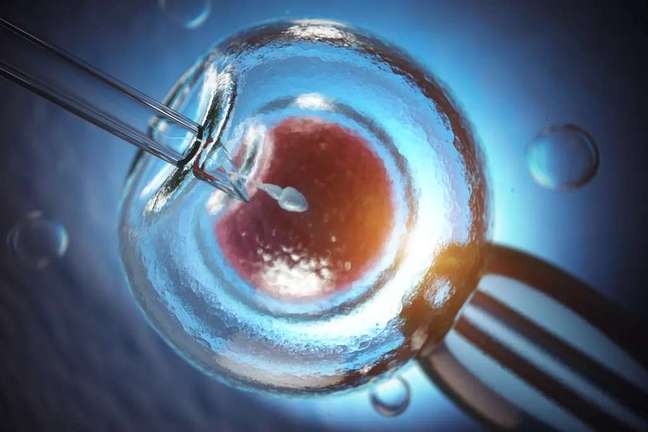The quantity has jumped from 32,100 to 114,300 in ten years, but the blocks become an ethical and moral problem at the time of disposal

A survey conducted by the National Health Surveillance Agency (anvisa) shows that the number of frozen embryos grew by 255% in Brazil in the last ten years. The figure jumped from 32,181 frozen in 2012 to 114,372 in the last year, demonstrating a large demand for service from women, mainly in clinics located in the south-east of the country, where about 79,000 embryos were frozen in this period. .
The data come from the Report of the National Embryo Production System (SisEmbrio), analyzed by the Brazilian Association of Assisted Reproduction (SBRA). According to gynecologist Carlos Gilberto Almodin, member of SBRA and one of the pioneers in the field of human reproduction in Brazil, the increase in the number of frozen embryos is the result of increase in the fertilization cycles performed.
The fertilization cycles refer to how many times the fertilized embryos will be transferred to the uterus of the woman requesting the assisted reproduction service, or how many times a pregnancy is attempted. Often a single cycle is not enough to guarantee a successful pregnancy, so several embryos are prepared by the specialized clinic.
It turns out that, before 2021, it didn’t exist limitation of the number of embryos that can be fertilized per fertile cycle. This has become an attraction for clinics with the arrival of the technology for genetic analysis of embryos, as it is thus possible to identify if there are genetic alterations in the embryo before transfer to the maternal uterus.
The expert points out that genetic analysis is able to prevent unsuccessful procedures or abortions. “When the advent of embryo genetic testing began, we began to notice that about 40% to 50% of the embryos were aneuploid, meaning they weren’t good,” he says.
Thus, according to the doctor, the progress of medicine began to be used wildly by clinics. “It was then that the embryos began to fertilize a little more. But this ‘little more’ has never been openly discussed, how much ‘more’ it would be,” explained Almodin.

“The clinics were desperately trying to identify the best possible embryo to transfer and get the woman pregnant as soon as possible and at the lowest cost,” says Almodin. Then the search for the ‘perfect pregnancy’ began.
Until the Federal Council of Medicine (CFM) understood what was happening and decided to intervene. A new standard was published in the Official Gazette in June last year. Resolution 2.294 / 21 establishes that doctors can generate a maximum of eight embryos in each in vitro fertilization procedure, that is, in each cycle.
What happens to the excess embryos?
The main problem regarding the limitation of embryonic fertilization is, in fact, on what is done with the surplus, those that are not used in women wishing to become pregnant. The increase in embryo freezing has become an ethical and moral problem at the time of disposal, which can only be done years after the initial procedure and with judicial authorization.
Under current rules, frozen embryos aged three years or older can be discarded if this is the express wish of the patients, but court authorization is required. The same applies to embryos stored by freezing and abandoned for the same period.
“The fact that the embryo is fertilized and frozen is an extremely controversial point, because our country is still a Catholic country, or at least has some religion”, explains gynecologist Carlos Gilberto Almodin.
As a result, clinics must keep it freeze-frozen until they are allowed to discard it, subsidizing their own costs of the operation.
“Without us wanting to discuss the principle of life, a large part of the population and even doctors do not agree to throw an embryo in the garbage. This would be a big problem both ethically, morally and legally,” explains the specialist in reproduction.
The alternative, therefore, would be to freeze the eggs, not the fertilized embryos. However, the question of the destination of fertilized embryos abandoned in clinics is a widely debated topic.
the numbers must decrease
The numbers released by Anvisa were largely collected before the new CFM resolution. With the new rule, clinics have begun to limit the number of fertilized embryos. As a result, the expectation is that the number of frozen embryos will drop significantly over the next few years as surpluses will be discarded.
This impact will be assessed at the 26th Brazilian Congress on Assisted Reproduction (CBRA 2022), which will take place at the end of August in Sao Paulo.
“We will discuss this situation and see if there has really been a significant drop in the number of blocks after the CRM regulation,” explains Carlos Gilberto Almodin.
* With editing by Estela Marques.
Source: Terra
Benjamin Smith is a fashion journalist and author at Gossipify, known for his coverage of the latest fashion trends and industry insights. He writes about clothing, shoes, accessories, and runway shows, providing in-depth analysis and unique perspectives. He’s respected for his ability to spot emerging designers and trends, and for providing practical fashion advice to readers.








